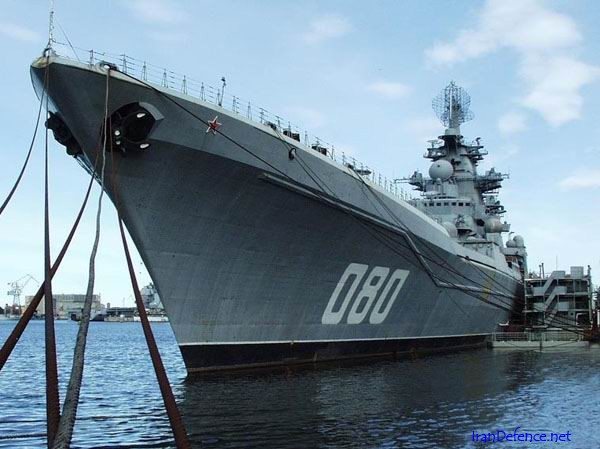20125 billion roubles have been allocated for the modernization of the Admiral Nakhimov cruiser. What capabilities will the updated ship acquire and are these expenses going to be justified in response to the shortage of new generation fighting ships? Talks about modernization of Admiral Nakhimov and other battlecruisers of Project 1144, withdrawn from the combat-ready forces of the fleet in the 90s, have been circulating for a very long time, but due to a lack of funds they had virtually no real implementation.
In the second half of the 2000s, the government started financing the armed forces, and this spurred discussions concerning the retired cruisers’ return to the ranks. Naturally, the question of their role in the overall structure of the Navy immediately arose.
Almost all experts have agreed on one point: the return of the Project 1144 vessels to the Navy would be practical only if their total modernization would make them multipurpose.
By this time the Russian industry has already acquired possibilities for such a modernization: universal shipborne shooting complexes were created that significantly increased the range of weapons adopted by a ship depending on a specific task. Combat information and new generation control systems allowed the construction of a large unit’s collective defense system, that is, to exchange information in real time and control the firepower of several ships from one command post.
Moreover, the Project 1144 cruisers upgraded with new shooting complexes and electronic equipment will acquire a totally new attribute as their dimensions allow these ships to be equipped with a large number of weapons, turning them into truly multifunctional vessels possessing powerful and diverse percussion armaments, air defense systems and anti-submarine defense.
Modernization with the use of all the above-mentioned technical innovations costs a lot. According to various estimates, the price of such large-scale works may total more than 40 billion rubles ($1.3 billion) per ship. Meanwhile, only 5 billion roubles have been allotted for Admiral Nakhimov’s modernization. What can be done with this sum?
Re-equipping the entire ship is out of the question because the amount of work and the cost of new units such an option unrealistic. According to preliminary estimates, 5 billion roubles should be enough to restore the ship’s combat capability to its “original” form and improve its on-board radio-electronic equipment.
It is also not guaranteed that these funds will be enough to replace close combat air-defense systems. At the same time, the basis of the heavy cruiser’s firepower – the Granit missile complex and ?-300F surface-to-air missile system – will most likely remain intact.
Nakhimov will be the first ship of Project 1144 to undergo modernization. Most likely, it will be followed by Pyotr Veliky, which will soon celebrate 20 years of operation. But the destiny of the first two cruisers – Kirov and Admiral Lazarev – is not decided yet. Apparently, their overhaul was considered too expensive to suit the “cheap” modernization.
The “cheap” modernization has one advantage. Admiral Nakhimov’s shipborne systems may be returned to the ranks rather quickly, within two-three years, as they have not been fully exhausted. However, this will not solve the problem in general. Admiral Nakhimov, as well as its younger sister-ship Pyotr Veliky, will remain as “specialized” ships, designed, first of all, for battling an enemy fleet. A “costly” modernization can turn the cruiser into a universal one, but it will take much more time – up to five or more years.
At the same time, it is hardly worth being in a hurry in this case. The Navy will receive a ship, though very powerful, but not meeting present-day requirements and unsuitable for solving practical problems the Russian Navy is currently facing.
According to this scenario, the sad fate of the American Iowa battleships can overtake the upgraded cruisers. These battleships were modernized in the 80s, but very soon after, they were transferred to the reserve in the first half of the 90s. However, if need be, their systems and mechanisms will allow them to continue to be used today.
Limited modernization has not given the Second World War battleships the opportunities that were necessary for successful competition with the latest cruisers and destroyers equipped with the Aegis Combat System. It would be a pity if Russian cruiserssuffer the same fate.










